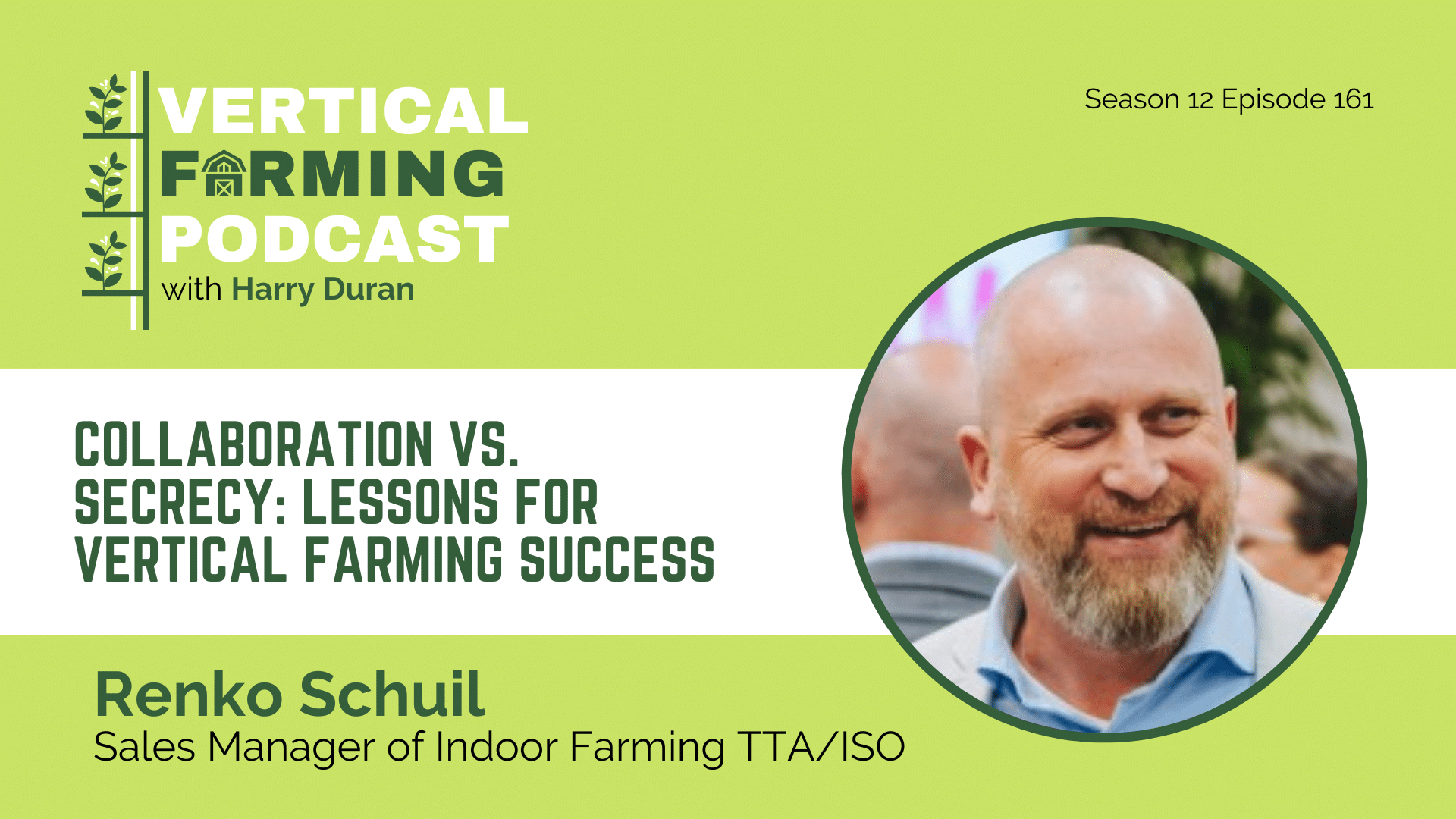Key Takeaways
- Indoor Farming Automation should be planned early, even if implemented later in the scaling process.
- Vertical farming is a method, not a standalone business model.
- Understanding the market and end consumers is essential for long-term viability.
- The merger between TTA and ISO aims to streamline plant handling and automation capabilities.
- Increased openness and collaboration could benefit the controlled environment agriculture sector.
Context: Indoor Farming and Industry Challenges
In a recent episode of the Vertical Farming Podcast, host Harry Duran interviewed Renko Schuil, Sales Manager for Indoor Farming at TTA-ISO. The conversation covered automation strategies, market challenges, and the evolving role of vertical farming in global food systems.
TTA, a Dutch company founded in 1996, specializes in plant handling and automation technologies. In 2024, it merged with ISO Group, another Dutch automation company, to strengthen its capabilities. “It’s a full merger,” Schuil explained, “which allows us to combine R&D efforts and offer a broader product portfolio without overlap.”
Background and Career Path
Renko Schuil has over 25 years of experience in horticulture and controlled environment agriculture (CEA). Although his academic background is in facility management, his career path led him through several roles in greenhouse-related sales and engineering. His early exposure to the greenhouse-dense Westland region of the Netherlands provided familiarity with horticultural practices from a young age.
“I started in 2000 in the CEA industry,” said Schuil. “Most of my career has been on the supplier side—logistics, hardware, growing systems, shading, and now automation and robotics.”
Industry Sentiment: Greenhouses vs. Vertical Farms
Early Skepticism
Schuil shared that early discussions around vertical farming in the Netherlands were met with skepticism. “The response was often: ‘Why vertical farming? We already have greenhouses,’” he said. That skepticism, however, began to shift as research institutions such as Wageningen University presented data on indoor farming’s potential under certain conditions.
A Hybrid Approach
Schuil noted a growing interest in hybrid models that combine vertical farming with traditional greenhouses, particularly for propagation. “It makes sense for early-stage plant development, where control over environmental variables is crucial,” he said. “It’s about using the right method for the specific goal.”
Strategic Planning and Indoor Farming Automation
Importance of Early Engagement
TTA-ISO encourages early conversations with growers—even those not immediately planning to automate. According to Schuil, design decisions made in the early stages can have long-term impacts on a facility’s scalability. “Even small changes in layout or process design can influence whether automation becomes feasible later,” he explained.
Role of the Merger
The TTA-ISO merger has provided opportunities for joint product development and broader market coverage. “While we were considered competitors, our portfolios are largely complementary,” said Schuil. “Now we can combine our expertise instead of working around each other’s patents.”
Lessons from Past Failures
Schuil highlighted a recurring theme across unsuccessful vertical farming projects: lack of market understanding. “It’s not enough to build a high-tech facility,” he said. “You need to know who your buyer is, what price they’re willing to pay, and how you’ll distribute your product.”
He also emphasized the importance of distinguishing between being a technology company and a food producer. “There needs to be clarity about the core mission—whether it’s growing produce or developing automation solutions.”
Market Differences and Global Trends
Regional Viability
Schuil pointed out that vertical farming may be more viable in regions with extreme climates—such as the Nordics or the Gulf states—where traditional farming methods require extensive energy inputs. “But these regions often have smaller populations, so the scale must be considered carefully,” he noted.
Crop Diversification
According to Schuil, there is increasing interest in moving beyond leafy greens. However, such diversification depends on the development of crop varieties suited for indoor systems. “We need shorter-cycle, compact plants that are harvestable in a single round,” he said. “Breeders and equipment suppliers both play a role in making this viable.”
Collaboration and Industry Culture
Schuil described a shift in tone at industry events. Compared to earlier years, recent gatherings have shown more realism and pragmatism. “The mood has changed. There’s less focus on rapid growth and more focus on sustainable business models,” he said.
He also observed that traditional growers tend to be more collaborative than many vertical farming startups. “In vertical farming, everything was IP-driven. Conversations started with NDAs. In traditional horticulture, growers often share knowledge openly.”
Indoor Farming Automation Strategy: Volume vs. Customization
TTA-ISO typically focuses on standardized automation solutions rather than one-off machines. “Custom-built systems can be costly and time-consuming,” Schuil said. He pointed to companies like Rooted Robotics as examples of providers who address niche needs or smaller-scale requirements.
Final Thoughts and Industry Message
In his closing remarks, Schuil emphasized the need for long-term planning and industry-wide coordination. “Even if you’re not ready for automation today, it’s worth understanding what’s possible in the future,” he said. “Look for existing solutions and standards—don’t reinvent the wheel.”
He concluded by encouraging a balanced approach: “Yes, we need ambitious ideas. But we also need to ground those ideas in market realities and operational experience.”


